Puzzle Pieces from the Past
Finding my Azorean roots.
Dear Readers,
In September of last year, Paul and I traveled to São Miguel, Azores. This was the first time I had ever been to the Azores. It’s about a 2.5-hour flight from Lisbon to Ponta Delgada, the main airport in the archipelago located on São Miguel Island. Paul remembers stopping in the Azores before his US Navy ship returned from Naples, Italy to Norfolk, Virginia (US) in the 1970’s.
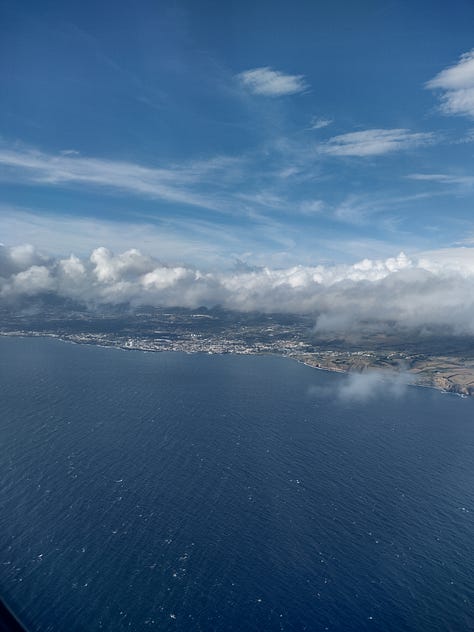
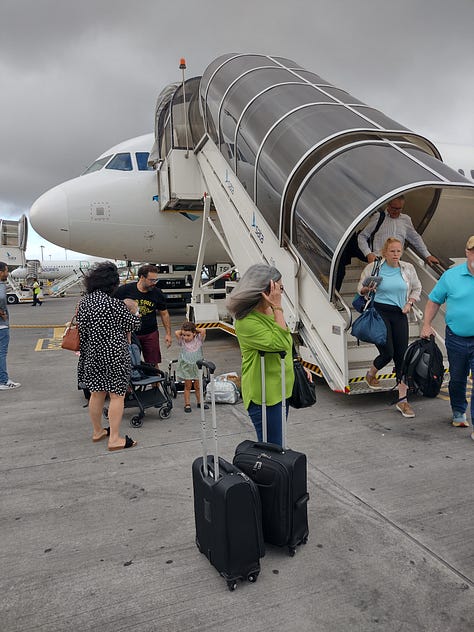
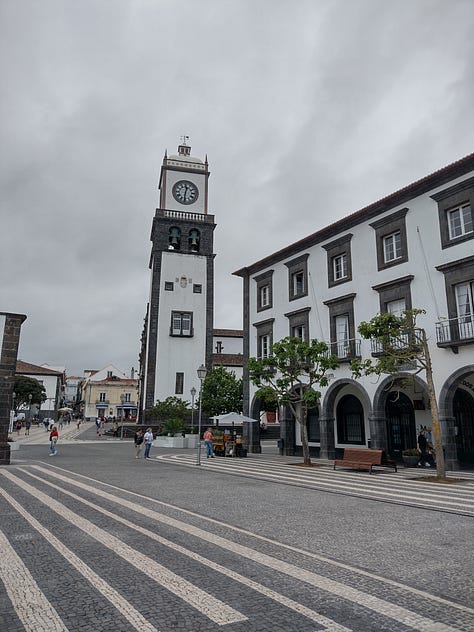
Earlier last year, I hired a genealogist to assist me with finding information on my Azorean roots on my paternal side. João Ventura, the genealogist, specializes in Azorean ancestry. He is Portuguese but speaks English. He lives on the Azorean Island of Terceira. Many Americans looking for help with their Azorean heritage hire João for assistance.
Citizenship through ancestry.
One of the reasons I wanted to learn more about my paternal ancestry is because I thought it would be easier to trace back the family lineage in the Azores than it would be on my maternal side (on the mainland), for the purpose of obtaining the documentation necessary to apply for Portuguese citizenship through ancestry – something that I am currently considering, although I will need to have a certain level of language proficiency to qualify (another project for me).
Acquiring citizenship, once you have applied, can take up to two years or longer to get. We can also wait to apply for citizenship (with language proficiency) in another 1.5 years, after fulfilling our obligation of temporary residency in Portugal which is five years. I always like to have options.
Portugal allows for dual citizenship, so obtaining Portuguese citizenship would not mean that I would have to give up my United States citizenship. With citizenship through ancestry, as my spouse, Paul would qualify for Portuguese citizenship through what is known as Family Reunification. Plus, part of my journey living in Portugal is to find my Portuguese roots – something that I am becoming increasingly fascinated with.
Briefly explained, Portugal allows citizenship through ancestry from either a parent or a grandparent if they were registered as citizens of Portugal. My mother and father were born in the US but their parents (all born in Portugal) did not register their children as Portuguese citizens (as far as I can determine).
So, this option ends with the grandchildren of my grandparents. If Paul and I had children (we do not) and had Portuguese citizenship, we could pass citizenship along to our children/grandchildren. Obtaining Portuguese citizenship and then securing a Portuguese passport also would mean that if we chose to, Paul and I could travel or live anywhere within most of the European Union without a visa or time limit.
Puzzle pieces from the past.
During João’s research, he found my paternal grandfather and my paternal grandmother’s birth records and the dates of their baptisms. The records included the parishes they were born in and the streets they were born on.
My father, who passed away in 2023 at age 94, traveled to Nordeste, São Miguel for the first time when he was 80 years old. At that time, he didn’t have much information to go on, so he was unable to find the exact areas where his parents had been born. I wanted to travel to the Island of São Miguel to find those streets and to get a sense of the history there - not just for me, but also for my Dad. Paul and I traveled with friends who had not visited the Azores since 2016 and wanted to be part of my Azorean ancestral expedition.
Agostinho (my grandfather) was born in Lomba da Fazenda and Maria da Glória (my grandmother) was born in Achadinha. This map illustrates where they were born and in what proximity their Nordeste neighborhoods are to Ponta Delgada, which is the capital of São Miguel and the Azores.
There were no street numbers at the time of my grandparents’ birth. And the areas where they lived were (and still are) rural. So, it would be nearly impossible to find their homes (if they even still existed) on those streets unless on future visits, I can find family in those areas who may be able to help.
Agostinho.
My grandfather, Agostinho, was born on May 13, 1901 in Leira in Lomba da Fazenda, Nordeste in São Miguel. On his birth record it indicated that Agostinho was the “second of this name” most likely meaning that a child was born with this first name, but that child did not survive past infancy. So, another child who was born later into the same family, often carried that deceased child’s name. Agostinho was the “second of this name” which means my grandfather had an older brother named Agostinho who did not survive. João did discover that my grandfather’s parents had a total of seven children - all boys. One boy who did not survive was named Agostinho.
Lomba da Fazenda, Nordeste, São Miguel Island.
The beautiful town of Nordeste includes smaller neighborhoods (a/k/a parishes). One such area is Lomba da Fazenda, the birthplace of Agostinho. Leira, I believe, is the street name. It’s a pretty neighborhood with its own church (where Agostinho was most likely baptized). The area has fields that go right down to the Atlantic Ocean.
We were able to find Lomba da Fazenda and the street named Rua da Leira. It’s a short street with homes that appear to be more recent structures. It ends at a pasture where a horse was grazing.
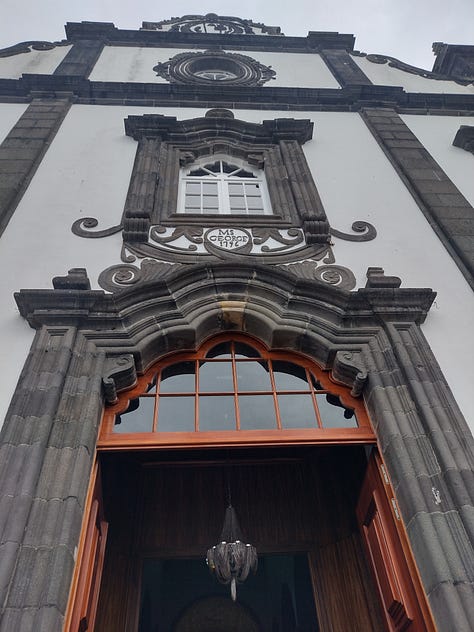
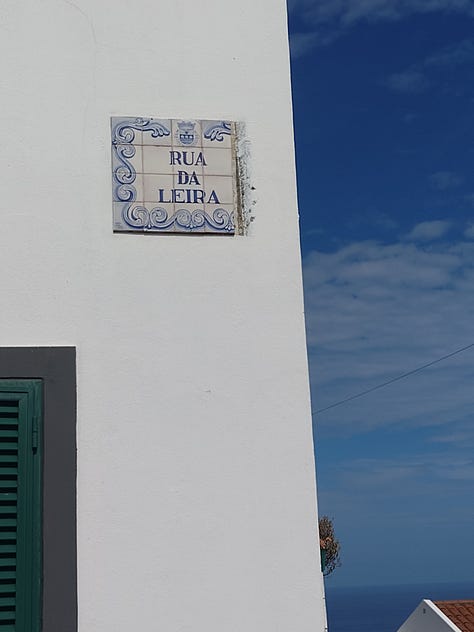
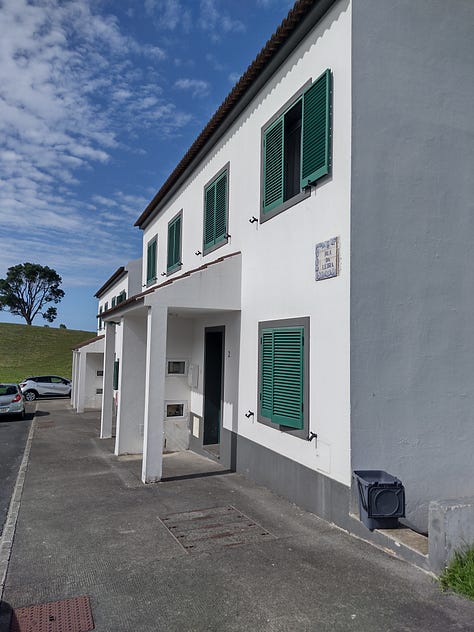
It felt surreal for me to be standing on this street. I wondered if the tree in the photo that was in the middle of the pasture was there when my grandfather was a child. This area is such a beautiful, serene place! There is an Airbnb right around the corner from this street. I would like to spend a few days there with Paul in the future and perhaps find relatives in the area.
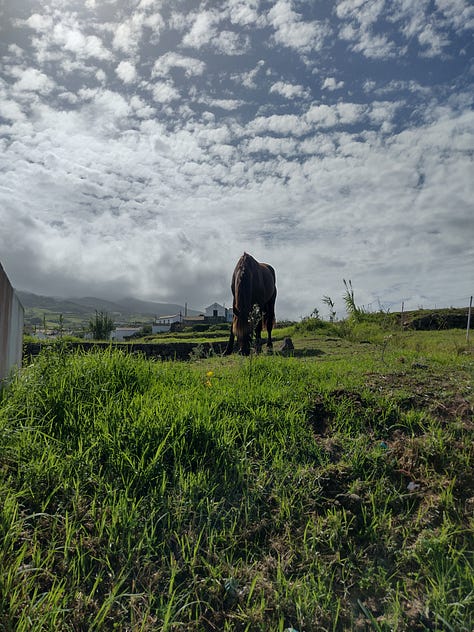

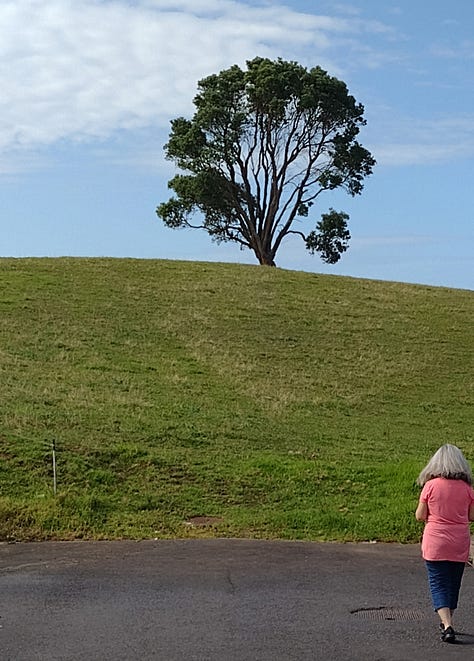
On August 10, 1920, a passport was issued to Agostinho. He was 19 years old. He traveled alone to New Bedford, Massachusetts, US. His occupation was listed as a Muleteer (A Muleteer was a person who transported goods using pack animals, especially mules).
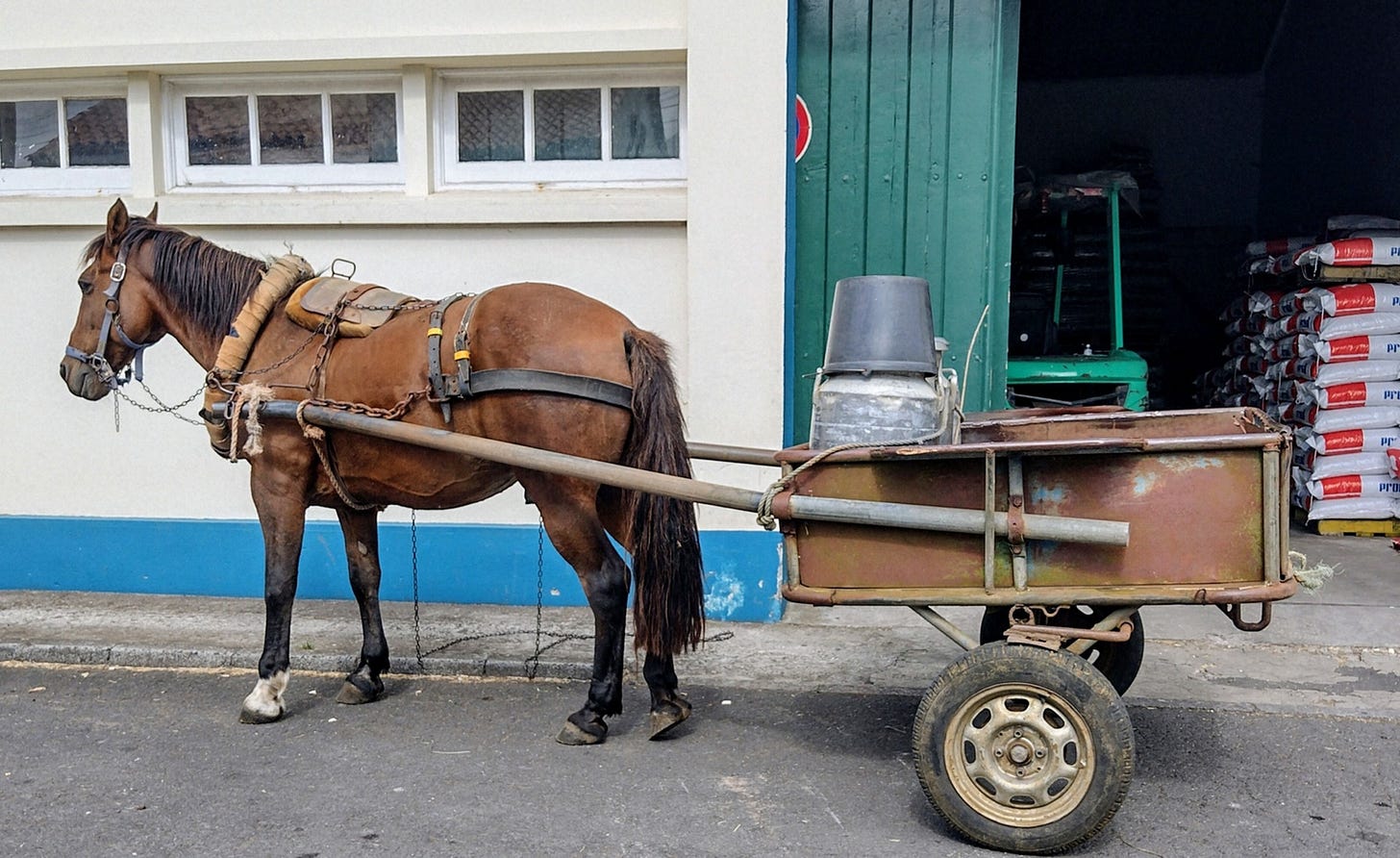
My grandfather died on February 14, 1995, in Rhode Island (US).
Maria da Glória.
My grandmother, Maria da Glória was born on May 2, 1905 on Rua do Burguete in Achadinha, São Miguel Island.
Achadinha, Nordeste, São Miguel Island.
As mentioned above, the village of Nordeste includes smaller parishes. One such area is Achadinha, the birthplace of Maria da Glória. Rua do Burguete, I believe, is the street name. It’s even more of a rural area than Lomba da Fazenda but with its own church (where Maria would have been baptized).
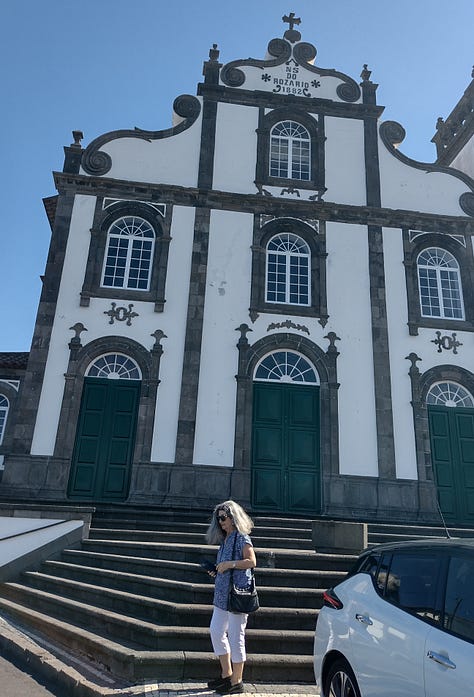
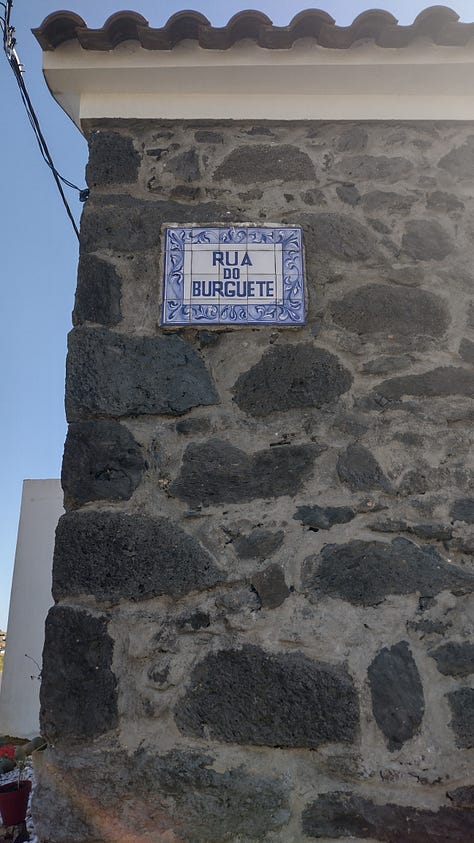
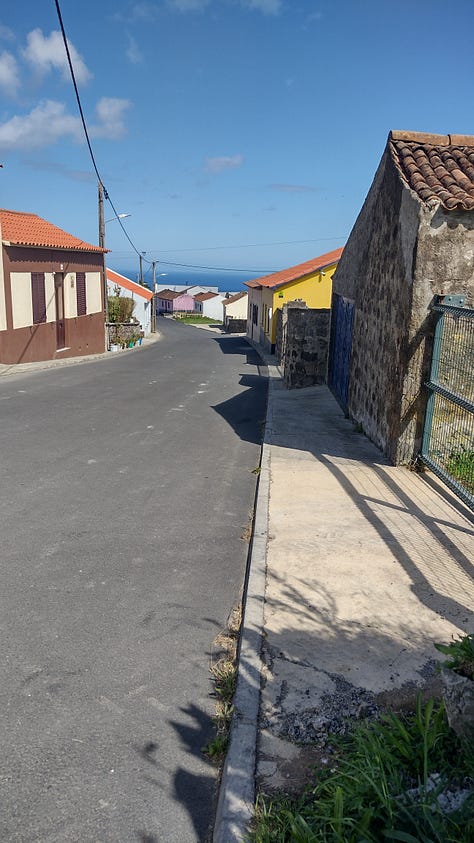
We were able to find the street named Rua do Burguete. It is a long winding rural road with a combination of newer and older dwellings. The road winds up a mountain where the pavement ends. The vistas from the street are beautiful – one part faces the Atlantic Ocean and the other part faces mountains and pastures.

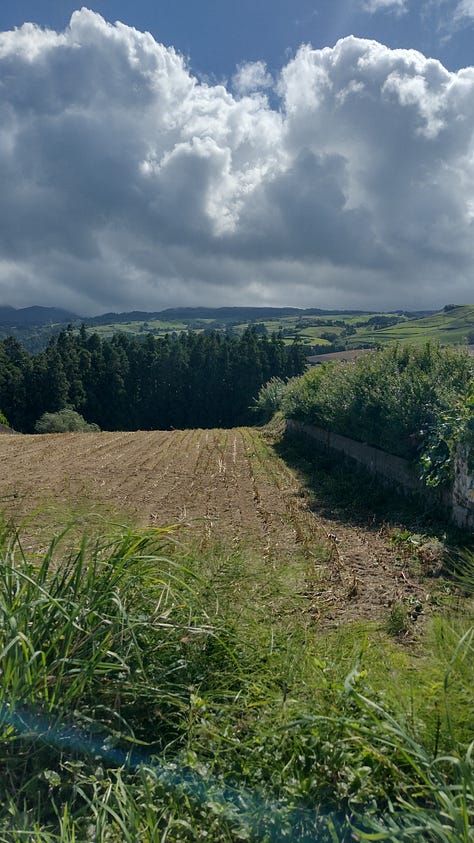
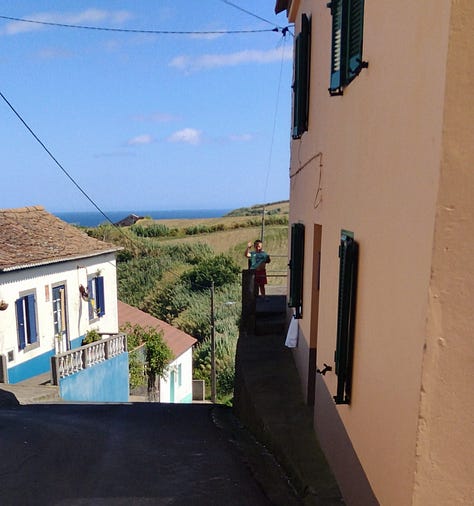
At some point as a young girl, Maria da Glória left Portugal and moved to New Bedford, Massachusetts, US, where she married my grandfather. She was a young mother of two small children when she died of Scarlet Fever (now a curable illness) on February 23, 1930 in New Bedford, Massachusetts.
This is a photograph of Maria da Glória and Agostinho with (I assume) my father’s older sister (my aunt).

Your roots begin in the stories.
Paul and I recently traveled to Porto, Portugal (about 3.5 hours north of Lisbon). One of the reasons for the trip was to personally meet with and interview an oral historian/genealogist for an upcoming article (stay tuned).
One of the discussions we had was about ways to find your ancestral roots. A comment she made stuck with me: Ancestral roots begin in the stories your family has told you.
The clues are there – waiting to be discovered. And even though I hired a genealogist to help, the snippets of information – the conversations we’ve had with our relatives – the stories we’ve been told - the small pieces of the past we may all have in the form of letters, documents, pictures – they all add up to finding our past – where we came from – who our ancestors were.
Personally, this means finding out about me – the people whose blood and DNA I carry. It’s part of who I am – and part of all the people I am related to. If you think about it, it’s truly a powerful connection. I think my father would be happy about this.
I will continue to share those snippets of my ancestral roots with you as I continue on this often unexpected but always fascinating Portugal journey!
Thanks for being on this journey with me!
Thank you for reading Our Portugal Journey. My newsletter is a reader-supported publication. To receive new posts and support my work, consider becoming a free or paid subscriber to help keep this publication independent.
You can also buy me a coffee or a glass of wine, anytime right here.
Until next time…
Obrigada!
Carol.




“Ancestral roots begin in the stories your family has told you.” Absolutely. Thank you for taking us on this journey.
So interesting! I am looking into this pathway as well. But it was my Jewish family being forced out of Portugal in the 1490’s. I’ve traced it all back with the help of a genealogist distant cousin in Israel. We shall see. Many things need to happen first to get us there and let’s hope the orange idiot doesn’t ruin Americans chances at living in the EU soon.